This post has been originally commissioned for SketchBook Blog in 2016. After the site’s migration, the original is no longer available, but you can still access the content here. Enjoy!
Cats are amazing animals—they’re fluffy and cute, yet they’re not really so different from their wild cousins. Having one is like having a miniature panther in your house! They’re very graceful, with a body that’s designed for hunting, and this elegance makes them a wonderful subject to draw. They also make a great “model animal” — once you learn how to draw them, you’ll be equipped with basic skills necessary for drawing dogs — and even horses! They have a surprising amount in common. I’ll show you.
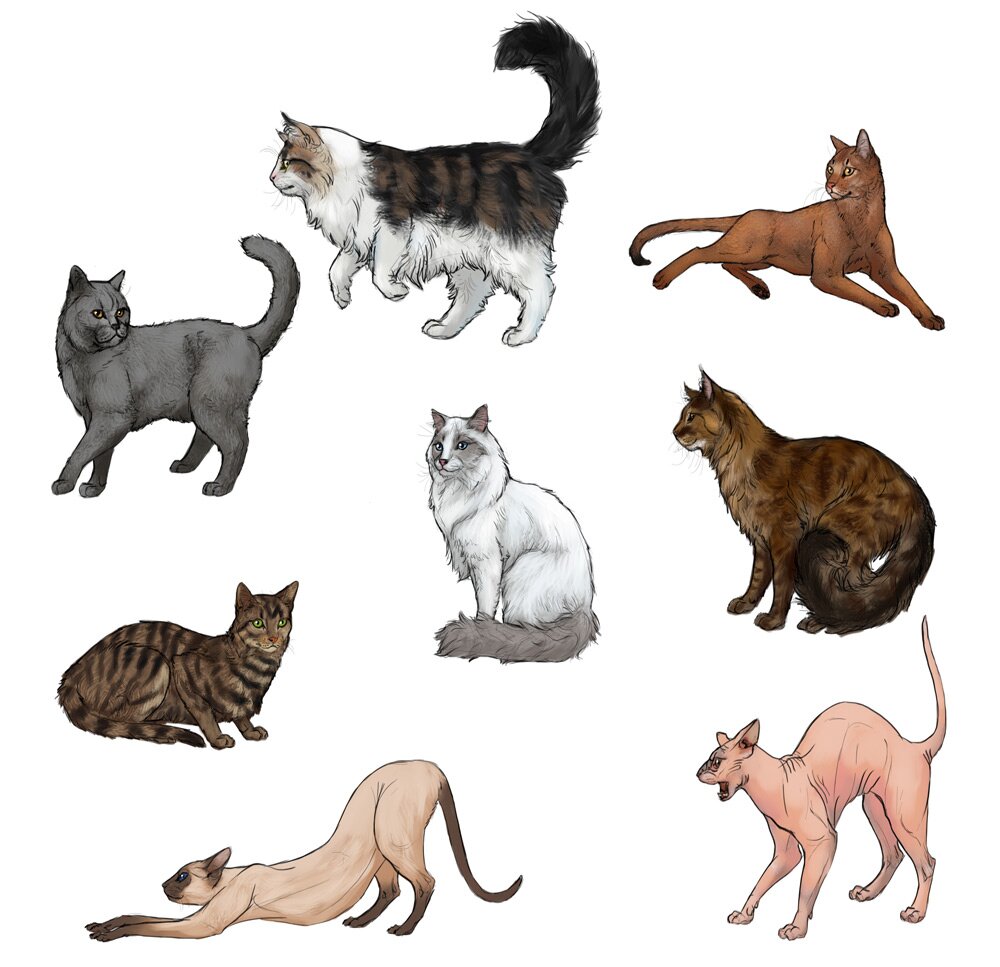
Simplified cat anatomy
Every animal’s body shape is defined by two anatomical levels: skeletal and muscle structure. They can be hidden under fur and skin, but without them the cat would be shapeless. Fortunately, we don’t have to learn the shape of every bone and the name of every muscle — we only need to draw what is seen.
A cat’s skeleton can be simplified to a set of lines. You need to memorize the proportions and location of the joints along with their limits. But once you have practiced this a few times, it’s all you need to start a drawing of a cat.
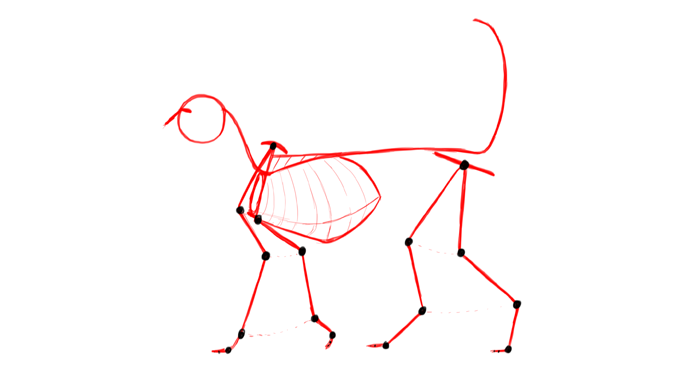
The easiest way to learn this method is to look at a photo of a cat and to draw the “skeleton” you can see in its body. After dozens of such sketches this will become automatic for your hand. Tip: if you want to draw cats from imagination, try not to look at the photo after you start sketching — this way you’ll practice using your memory as well.

When drawing, pay special attention to the spine. In cats it’s very flexible, and it’s limited only by the ribcage and the hips.

Although muscles are more complicated than a skeleton, in case of cats they can be highly simplified. This is because cats have a very loose skin that covers the outlines of the muscles even in hairless breeds. This makes them very easy to draw!
After you draw the skeleton, you can start “dressing” it with parts of the body. Feet…
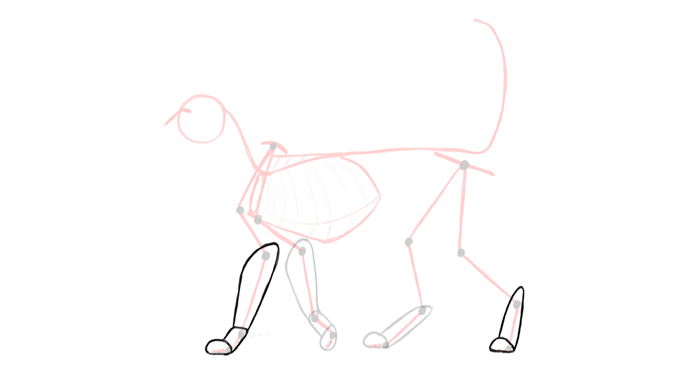
… thigh and shoulder…
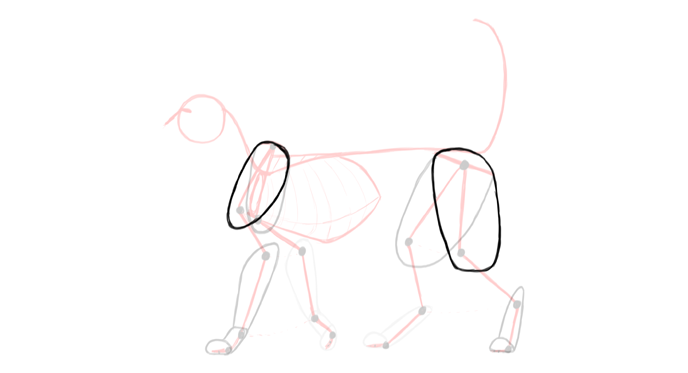
… arm and calf…
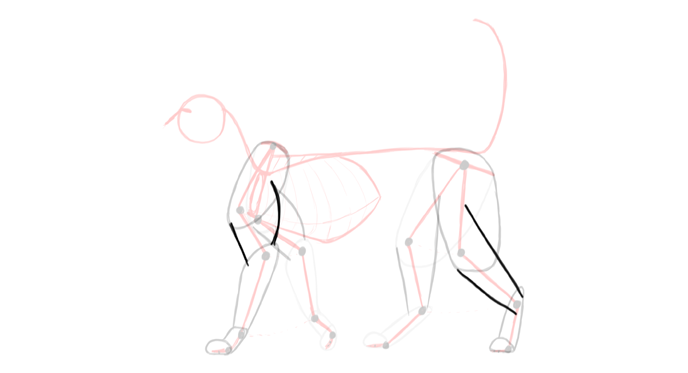
… and the loose skin between the parts.
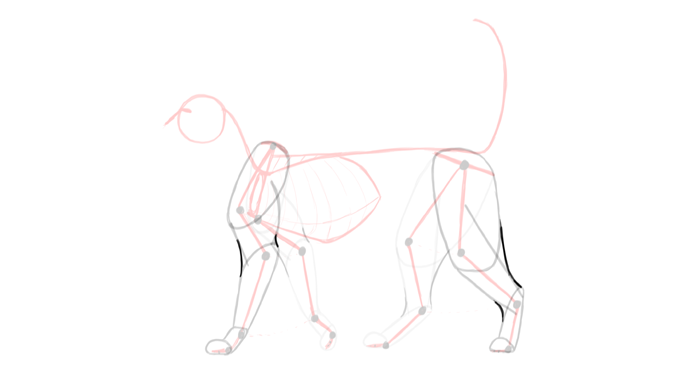
Now you can draw the outline for the rest of the body. It’s rather blocky and can be similar in shape to a long loaf of bread.
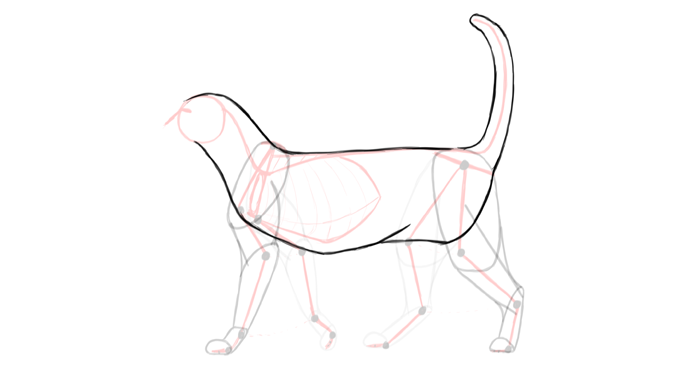
Finally, you can cover all the parts with loose skin, keeping only the outlines you need. I like to imagine I put the cat inside of one-piece pajamas — tight around the specific parts of the body, but loose in between.
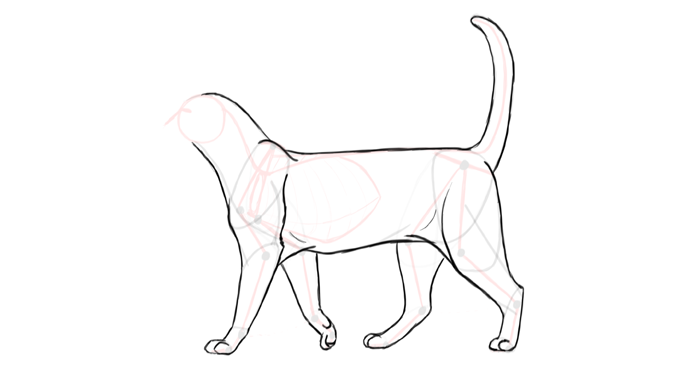
There’s no one-and-only correct order for drawing the body. Sketch it the way you want! Again, practice with a lot of different photo references to understand it better and to make the movement more automatic for your hand. You need to work out your own method that will work best for you.

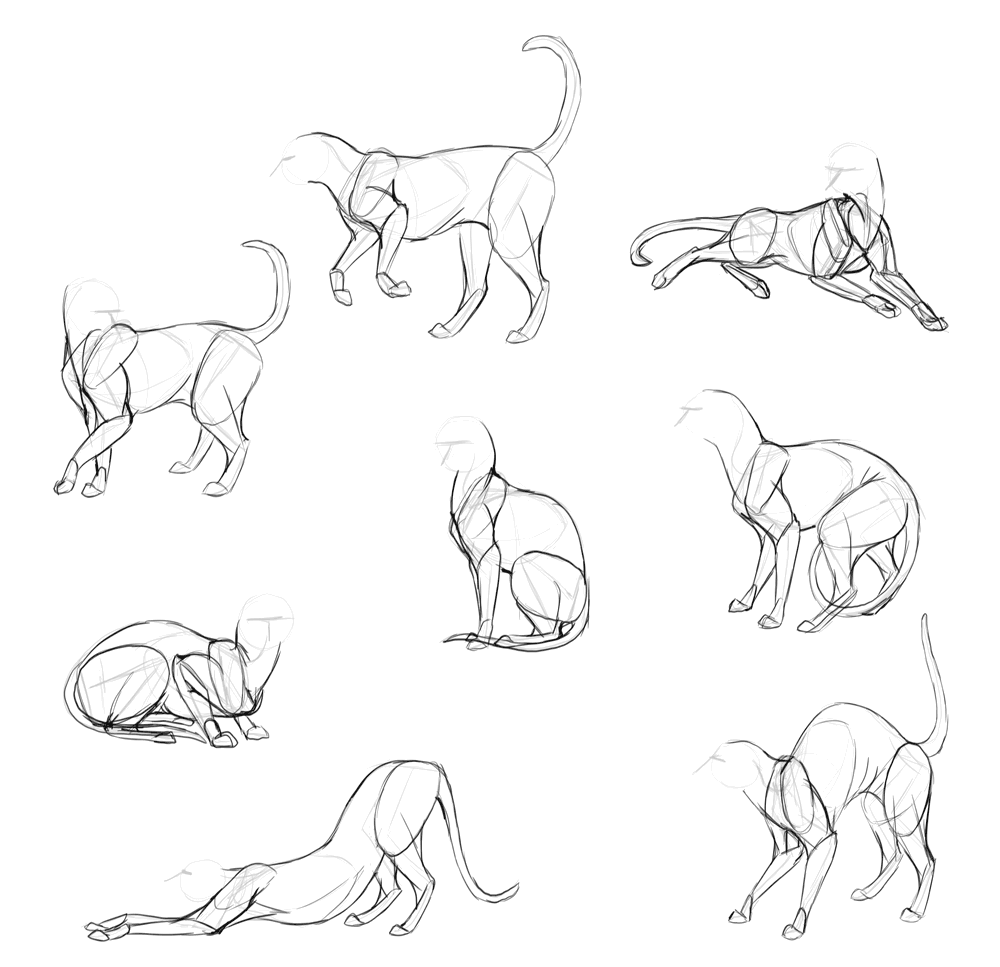
How to draw a cat’s head
Cats come in many shapes, but there’s a certain arrangement of proportions that creates a typical “cat face.” You don’t need to memorize them 100% — general rules are more important here. Start with a T-shape stuck to the imaginary head. These are the lines of the eyes and nose, and they should define the direction of the head even when you can’t see it yet as a whole.

Add a muzzle. It has the shape of a sack pinned to the point between the eyes.

Cut the muzzle into half, then cut the upper half as well. This will create the length of the nose bridge. In some breeds it may be longer (in others, shorter), but a half of the muzzle is a “safe” choice for a generic cat.

Turn your cat into a panda for awhile!

Place the eyes in the middle of each “eye patch.” They shouldn’t touch the muzzle, and they should be slightly crossed with that original eye line.

Add the forehead. It can go straight from the nose line, but you can also create a “step” at this point, depending on the breed.

Add the jaws…

… and the rest of the skull.

You now have enough guide lines to add the details:


Cat ears are very complicated, not only difficult to draw, but also hard to imagine in 3D. They can’t be simplified to any basic form, but they can be roughly converted to a set of parts: a base (a), a “roll” or a “horse ear” (b), two pairs of flaps (c), a pouch (d), and the “front yard” (e). Even when covered in fur these parts define the shape of the ear.
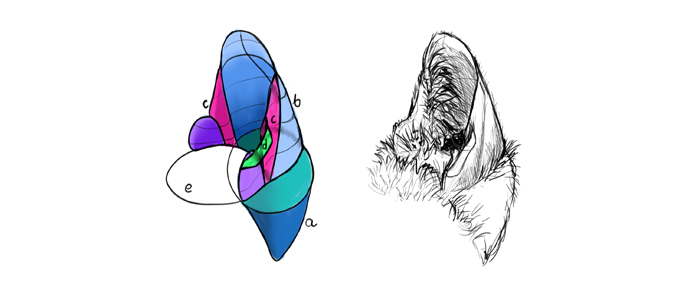
We can draw them step by step: start by drawing a spherical base and the opening of the ear. This will establish their position and length.
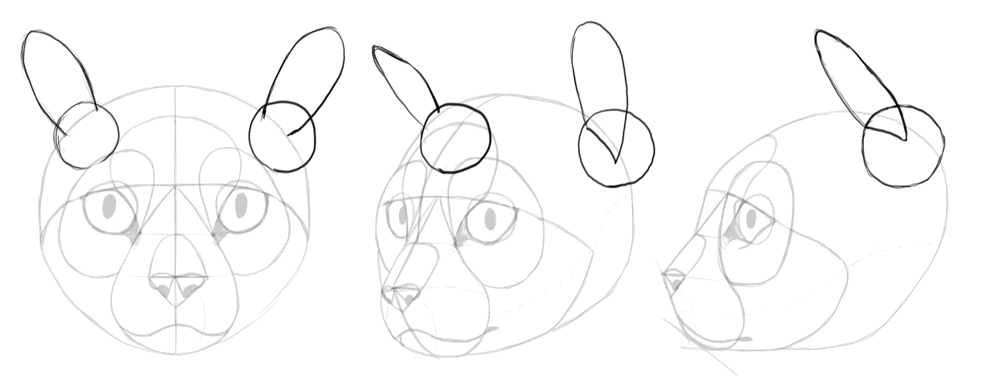
Add depth to the ear by drawing a kind of half-rolled leaf. If this is hard for you, you may need to practice perspective and drawing forms in 3D first.
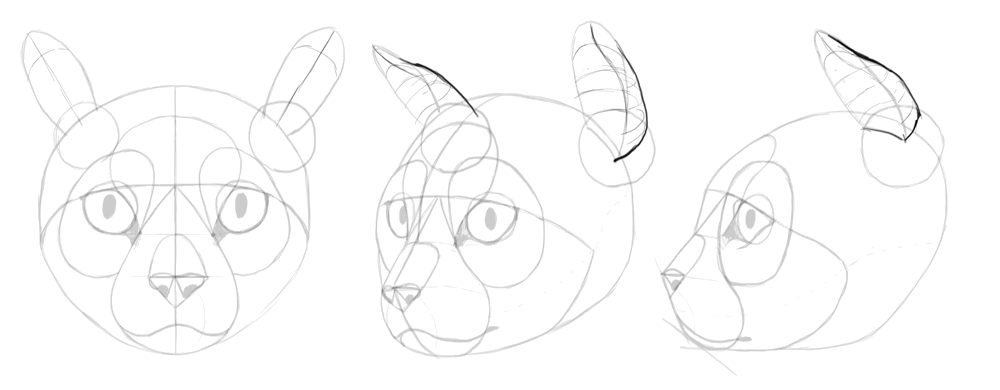
Create the “front yard” area between the ear and the eyes.
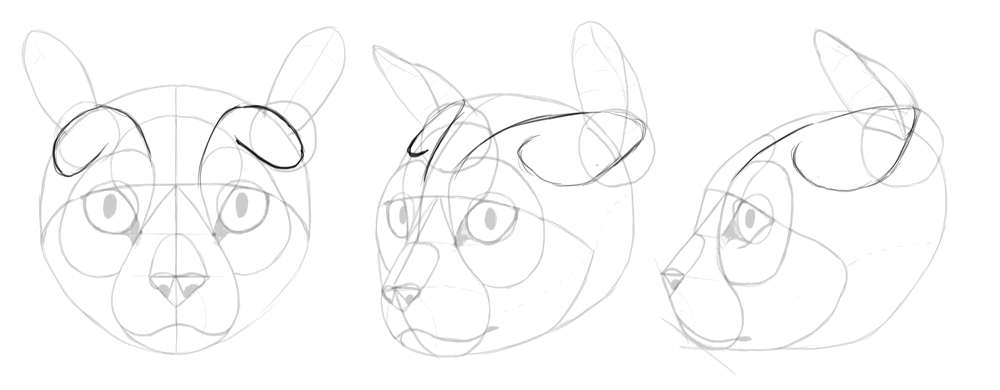
Add the flaps. Again, perspective is important here!
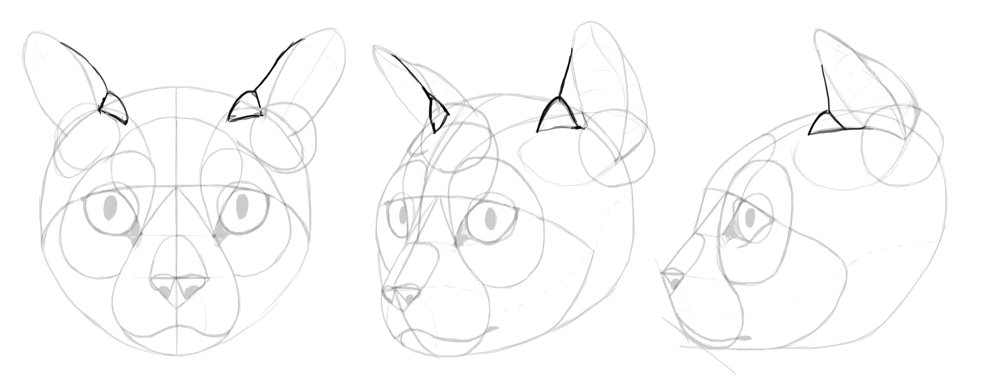
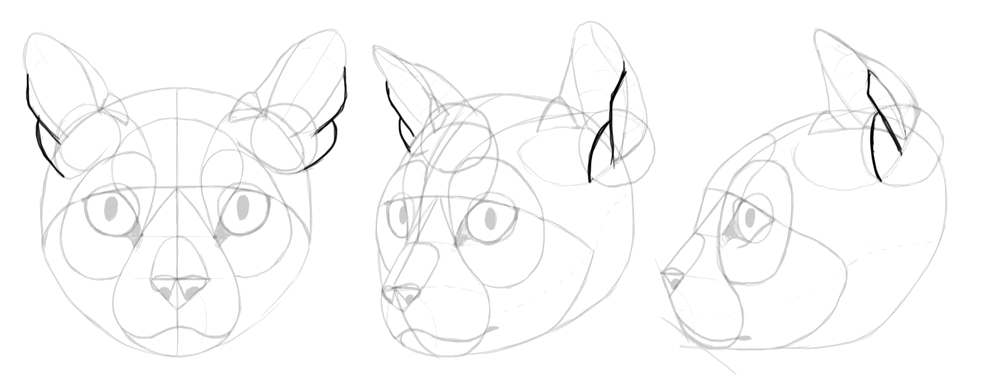
Finally, add the rest of the base and the little pouch covering the outer flaps.
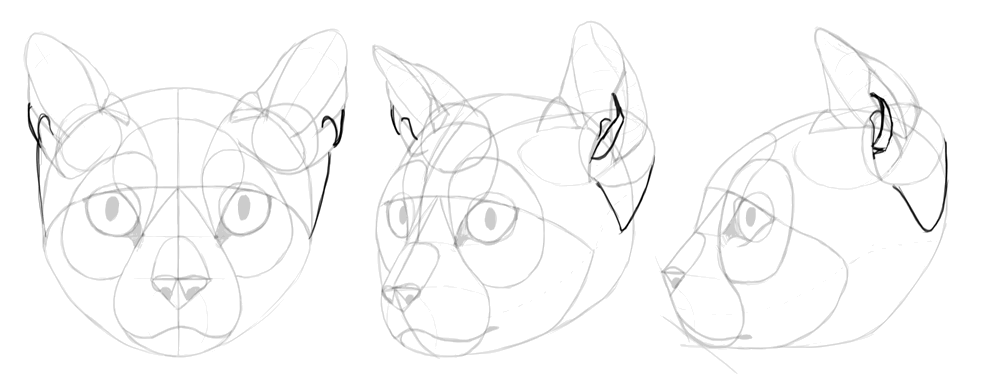
This process gives you a generic cat head, and now you can modify it to create the breed you want.
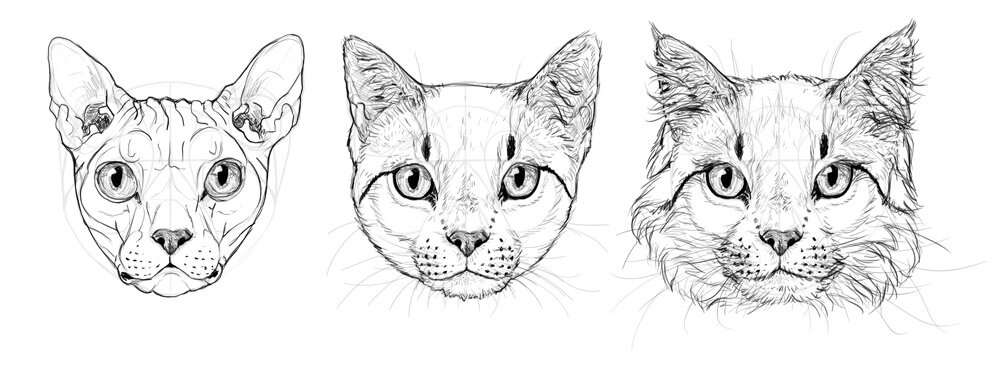
Let’s add heads to our sketches:
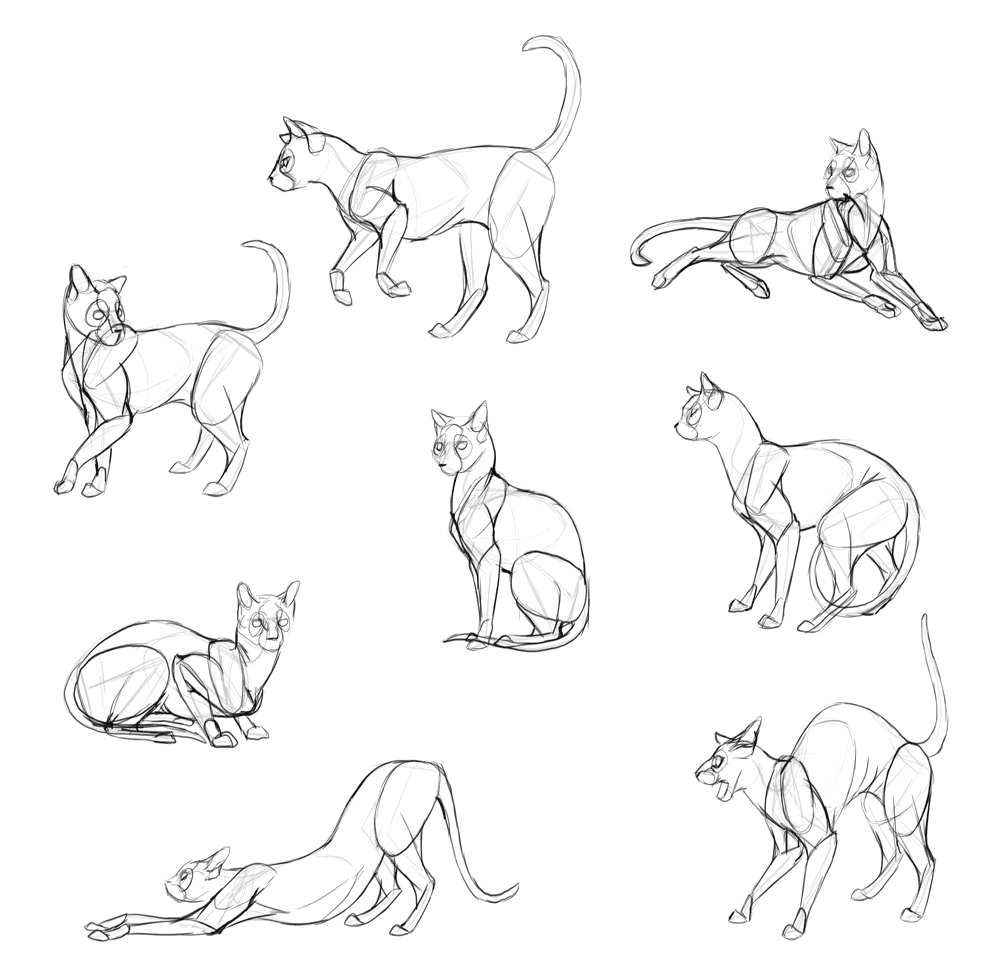
How to draw cat paws
Cats paws are unique — their deadly claws are hidden inside cute balls of fluff. All this fluff, again, makes them quite easy to draw. Let me show you! A typical cat has five fingers but uses only four for walking. The fifth one (a) is called a dew claw, and it’s positioned like your thumb. It doesn’t normally touch the ground. Each finger has a pad beneath, the same you have under your fingertips. There’s also one additional pad called pisiform (b). You can feel the bone it covers on the outer side of your wrist—in humans it’s not covered by any pad.
The hind paws have only four toes, and no pisiform either.
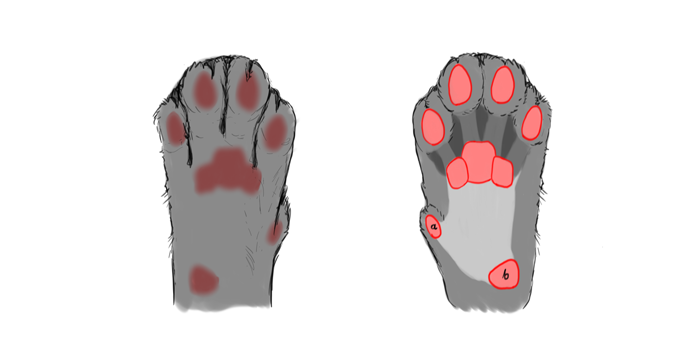
You can sketch the paws while drawing the skeleton. Imagine they’re pieces of wire, and that they must support the cat’s body.

Draw the basic shape of each paw. Notice that the 3D view (c) is a combined version of two 2D views (a, b).

Add the outlines of fingers and toes. Don’t forget about the dew claws in the forepaws, placed like your thumbs.

If your cat is short-haired, you can add ovals in the front of fingers and toes to accentuate the shape of the bones beneath. Also, don’t forget about the pads, if they’re visible, and the pisiform in the back of the forepaws!

Finally, the outline of the paws. In short-haired breeds the tips of the claws in the hind paws can often be seen, so you can add them as a nice accent.

Add the fur
After you sketch the pose and the anatomy, you can make your cat complete by adding fur. The longer the hair, the “fatter” every part of the body must be. Also remember that hair grows in a certain direction all over the body. Don’t forget about that “one-piece pajama” look!
Before you draw a certain breed, spend a few minutes analyzing pictures of it. How do you need to modify the face’s proportions to achieve that look? How long is the fur, legs, tail? You don’t need to draw every little detail, but some elements are necessary if you want people to recognize the breed.
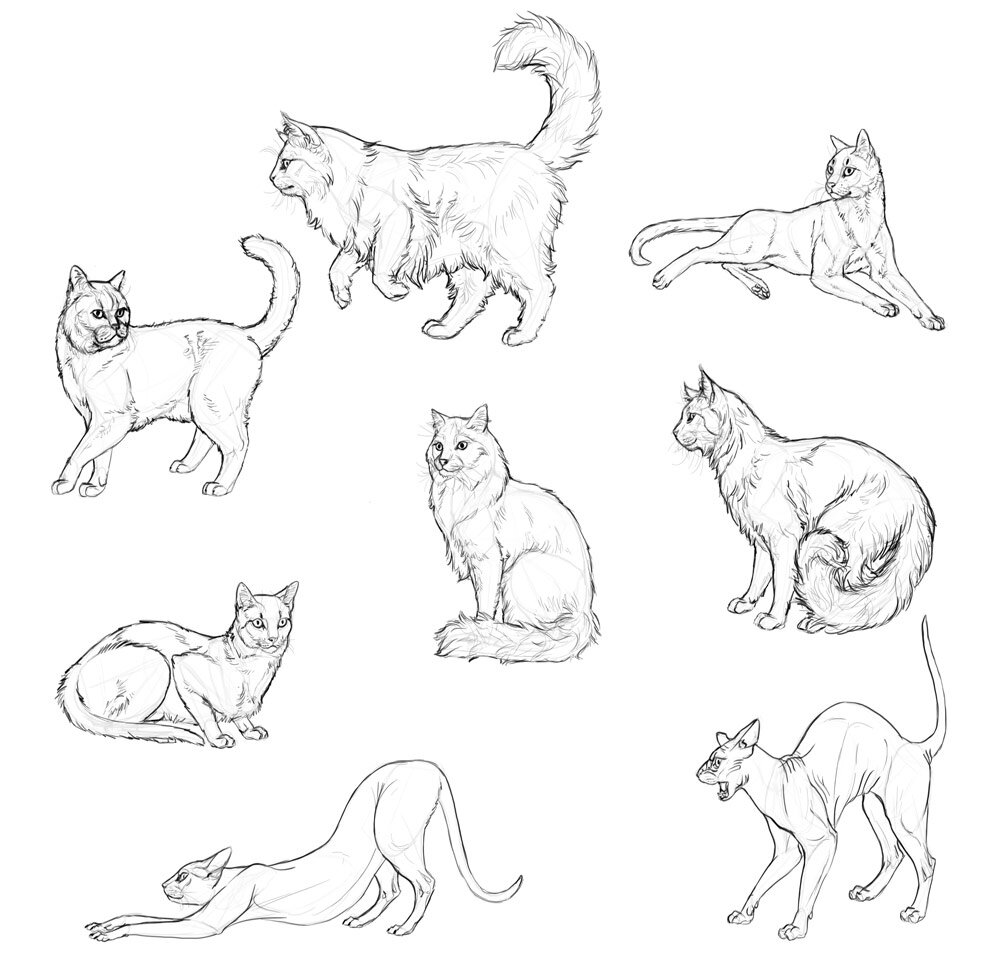
This was a “how to draw cats for beginners” type of a tutorial. If you’re looking for something more advanced, consider joining my Patreon, where you’ll find a treasure trove of cat anatomy references designed for artists:

And if you’re looking for a “cheat sheet” for big cat anatomy, you should definitely check out my lion anatomy diagrams, available as a handy PDF—describing all the bones, muscles, and even soft tissues, in an artist-friendly form. They’re a result of over two years of studies, and they’re exactly the kind of a reference I dreamed of as a beginner animal artist!

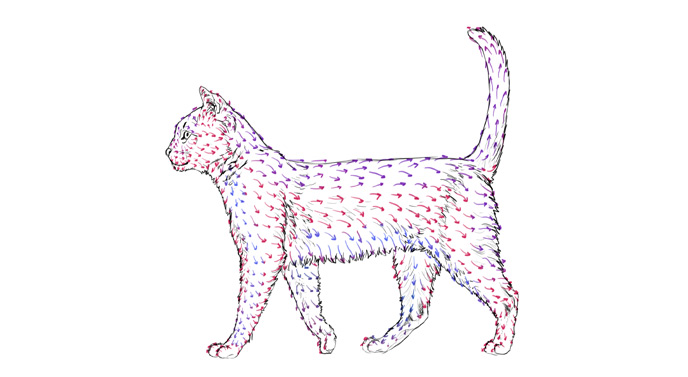
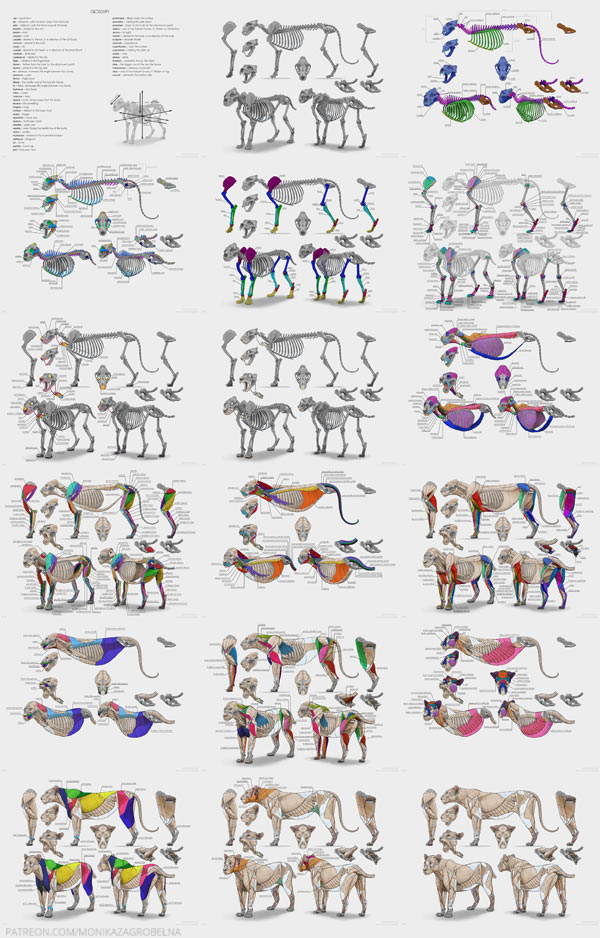
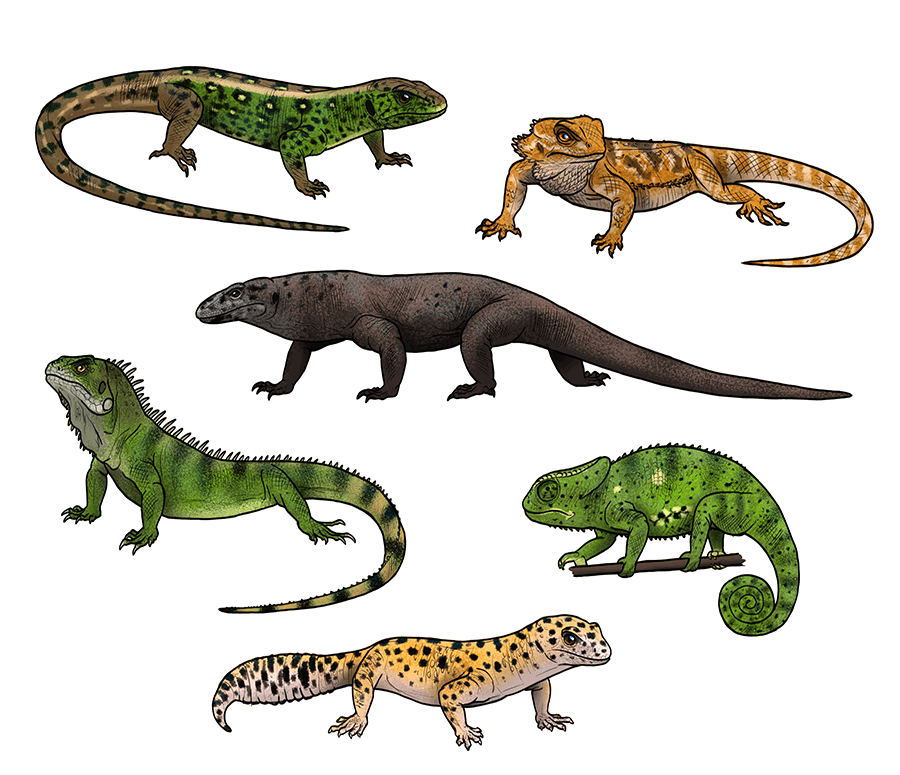
14 Comments